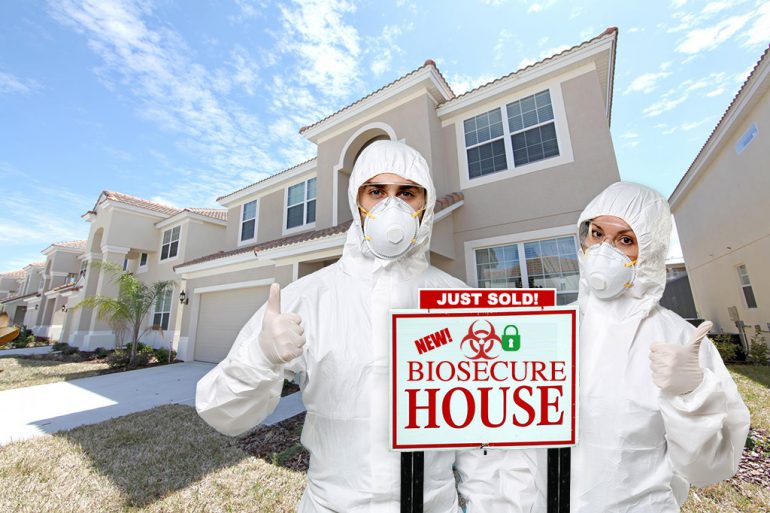How to Create a Biosecure Post-Pandemic House
The world is going through a severe pandemic, something not seen in 100+ years. This emergency is changing many things about our daily home lives and hygiene habits. People are staying home more often, and houses need to evolve to meet this new norm.
The term “biosecurity” describes the precautions taken to protect against the spread of lethal or harmful organisms and diseases. Becoming biosecure will be the most important trend of this decade. By adding biosecurity features, fix-and-flip investors and homebuilders can create properties that demand a market premium.
Although homes were trending toward being more eco-friendly, there is going to be a new wave of biosecurity home features in the near future. The home must be designed to keep the outside environment out, remove any contamination that gets in, and prevent its inhabitants from contaminating each other.
Front Entryway Modifications Needed for Biosecurity in Our New Homes
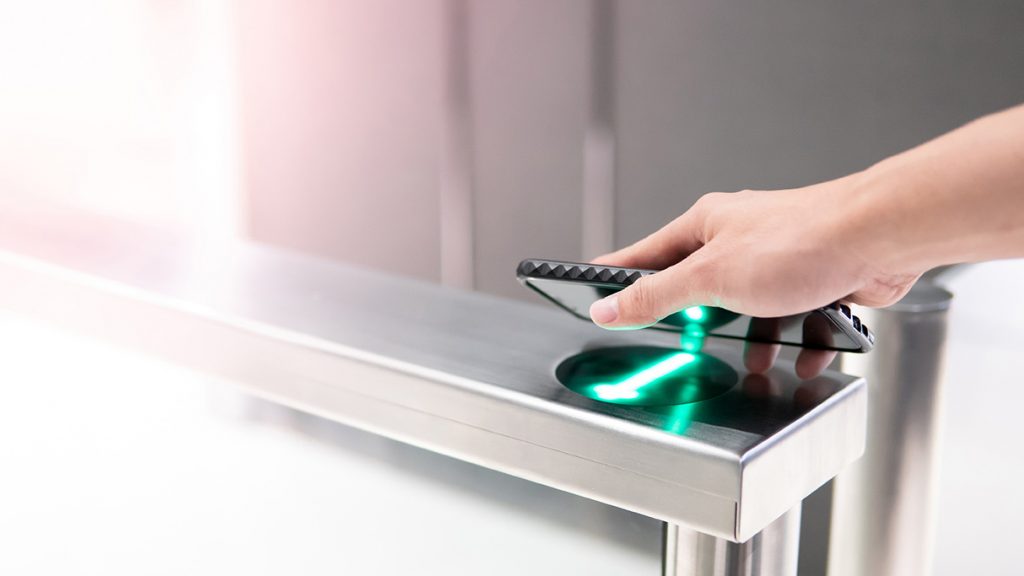
Multiple hands-free keyless entry system for biosecurity and personal safety
The home’s main entrance is the most important area for biosecurity improvements for three reasons: public cross-surface contamination, delivery reception, and outdoor air contamination upon entry. The front door needs to operate hands-free, keep outside air from entering the home when it is opened, and provide a place to receive packages securely. The front door and the entire front entryway need to evolve.
1. Make the Front Door Completely Hands-Free
The front doors of houses are fully exposed to the general public. With some simple technological changes, they can become more biosecure.
We don’t want to force all of our family members, visitors, and service personnel to share a dirty doorknob, so let’s lose this antiquated item first.
Install a smart lock, which is widely used today, instead of a deadbolt. There is no need to keep any kind of doorknob or handle. Instead, install a hands-free door opening device called a foot pull at the bottom of the door so people can open it with their foot instead.
The smart lock will unlock and unlatch the door when a homeowner is in front of it, and then the visitor can pull the door open using the foot pull.
Simple modifications to spring-loaded door hinges allow for the door to spring open a few inches when unlocked, making it easier to open via a foot pull–style opener.
2. Install an Air Curtain Above the Front Entry Door Frame
A popular way to keep the outside out when opening doors is to use some old, simple tech already employed in many commercial retail spaces: the air curtain.
You’ve probably noticed loud blowers and whooshing air hitting your head as you walked through the sliding doors at a grocery or department store. This is the air curtain doing its job.
By blowing a wall of air down, the air curtain prevents the outside air, bugs, and contaminants from moving past it. There are smaller versions of these air curtains available from around $180; it’s a no-brainer addition to any home at that price.
3. Create a Biosecure Entryway With a Secured Foyer
The rise of internet shopping has increased the importance of the small piece of real estate directly in front of the front door that receives deliveries.
Each house should have an enclosed foyer or alcove before the front door. This area is essentially a small room with another door that leads into the house. This style of entry used to be popular in cold weather because it was a simple way to keep hot air from rushing out and provided space to disrobe wet and messy winter gear.
For biosecurity purposes, an updated entryway designed for smart and secure deliveries is necessary now. Delivery drivers would have a company-issued digital key to enter the house’s foyer, but not the second door leading into the main house.
Companies like Amazon, Walmart, and DoorDash would leave packages in the secure space without compromising the homeowner’s personal safety. Amazon already launched a similar service called Key by Amazon, which is temporarily suspended.
Gone are the days of the evil porch pirates who steal packages off front porches!
4. Construct a Decontamination Area Off of the Secure Alcove
The new biosecure home needs a place for homeowners to remove contaminated clothing and other protective gear.
Instead of the traditional coat closet off the home’s entryway alcove, a secured door leads to a decontamination room. Biohazard disposal bins allow for easy and secure disposal of used gloves and face masks upon entry.
As the homeowner strips nude, clothes are placed in a small, stackable washer and dryer for immediate sanitization. After all, bringing contaminated clothing inside to the laundry room would compromise the biological integrity of the home. A small decontamination shower stall lets the homeowner maintain the property’s biosecurity.
5. Install Biosecurity Stations Inside Near All Exterior Doors
Both front and back exits need only small spaces dedicated to dispensing biosafety equipment or PPE (personal protective equipment). PPE dispensers for medical gloves and face masks, as well as UV disinfecting stations, should flank the front door entryways inside the home.
Homeowners need to keep protective gear in a place all friends and family can easily access before leaving. Going outside without safety equipment will not only be ill-advised in the future but likely illegal as well.
All Appliances and Water Fixtures Must Have Hands-Free Operation
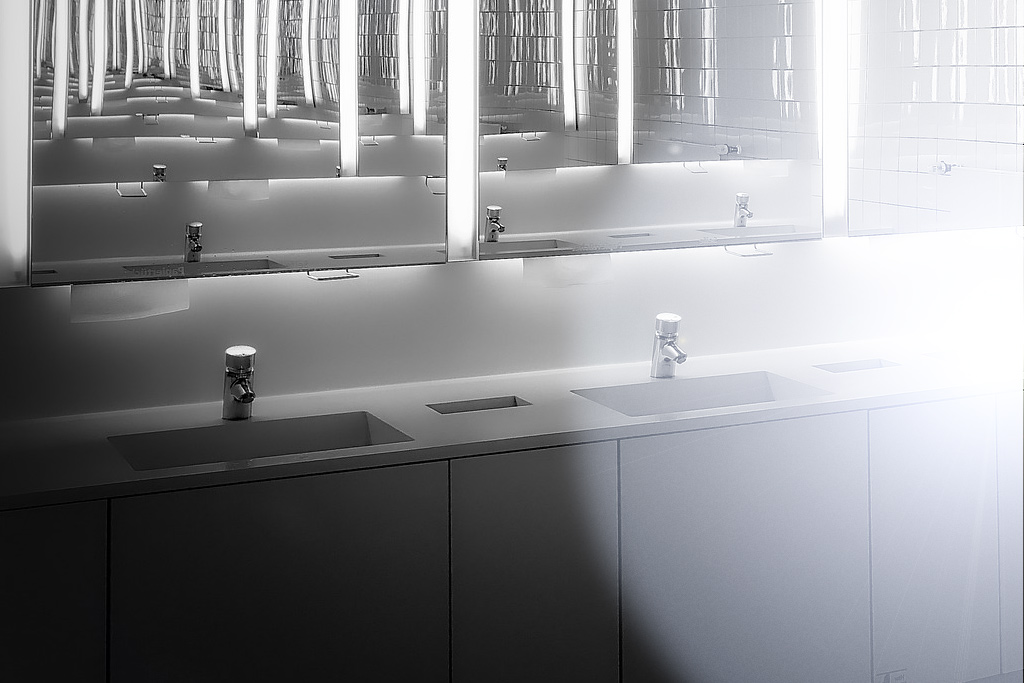
The biosecure bathroom will be robot cleaner–friendly
Anything that is operated by hands or fingers needs to change. Some appliances and fixtures that are currently available make this achievable and more affordable than ever! Through a combination of analog and digital solutions, it is possible to make everything in the biosecure home hands-free and automated.
Only recently, setting up smart homes went from being niche knowledge to a simple and affordable setup that the everyday homeowner can maintain and operate. If a smart home was to be designed from scratch, it would have a more elegant and integrated operation and cost far less than the chunky retrofits people are currently creating.
1. Set Up Digital Assistant for Voice Command Control
This one is easy. Google Home, Amazon’s Alexa, and Apple’s HomeKit are each built to be your trusted digital assistant. All of the house lighting can easily be controlled via schedules, voice activation, and sensor activation.
Digital home assistants can detect the homeowners’ presence in a room through methods like motion control activation and turn on lights, raise music volume, and adjust thermostats. All new kitchen appliances like refrigerators, ovens, and dishwashers can be connected to our digital assistants for simple voice control and scheduling.
With smart appliances, everything can be opened with a wave. Spring-loaded doors can pop open at our command. Oven times and temperatures can easily be set via voice control or apps. There are appliances already on the market like Suvie that can take raw and refrigerated ingredients and cook a dish without any human interaction.!
2. Install Hands-Free Water Fixtures
Two areas of great biosecurity concern have always been the kitchen and bathroom. Water fixture designers already began the trend of hands-free and even contactless operation long before the current pandemic.
There are many wifi-enabled kitchen and bathroom faucets to choose from. Simple voice commands or elbow contact can be used to turn these faucets on and off, change the temperature, and more. These faucets are currently so advanced you can even say “Dispense one cup of water” and voila — only one cup of water comes out of the faucet!
Digital faucets are currently costly, but as the demand builds, prices will come down.
3. Utilize Hands-Free and Paper-Free Toilets
Toilets have not evolved much in the United States since they moved the flush tank off the ceiling and married it to the bowl in the early 20th century. If you have ever traveled internationally, you know many other cultures have far advanced past the typical American flush toilet. It’s time for Americans to change the most important seat in the house.
Specialized low-flow toilets need less water to flush, which is not only eco-friendly but prevents additional aerosolization of the toilet water and waste. A newly available Teflon-like spray coat on the enamel causes fecal matter to slide down and out of the bowl without sticking while using a lot less water.
Toilets would, of course, feature hands-free flushing thanks to a photosensor, voice activation, or foot-pedal flushers. Built-in bidets clean the operator, decreasing the need for traditional toilet paper. Using paper to clean oneself fell out of fashion after the great toilet paper recession of 2020 — water does a far superior job.
Tabove
4. Build Hands-Free Interior Doors Without Doorknobs
Doors will no longer need to be opened by turning a knob or handle. A digital solution would be a simpler and cheaper version of current exterior smart locks adapted for use on interior doors.
Once inside a room such as a bedroom, the occupant can lock and unlock the door via voice command or with a hand gesture near a photosensor where the door handle used to be. The door is pulled open and shut using a foot pull. Forearm pulls might be used for heavier doors; they are also easy to install and more biosecure than doorknobs and handles.
Built-In Automatic Sanitization Is a Necessity for Biosecurity
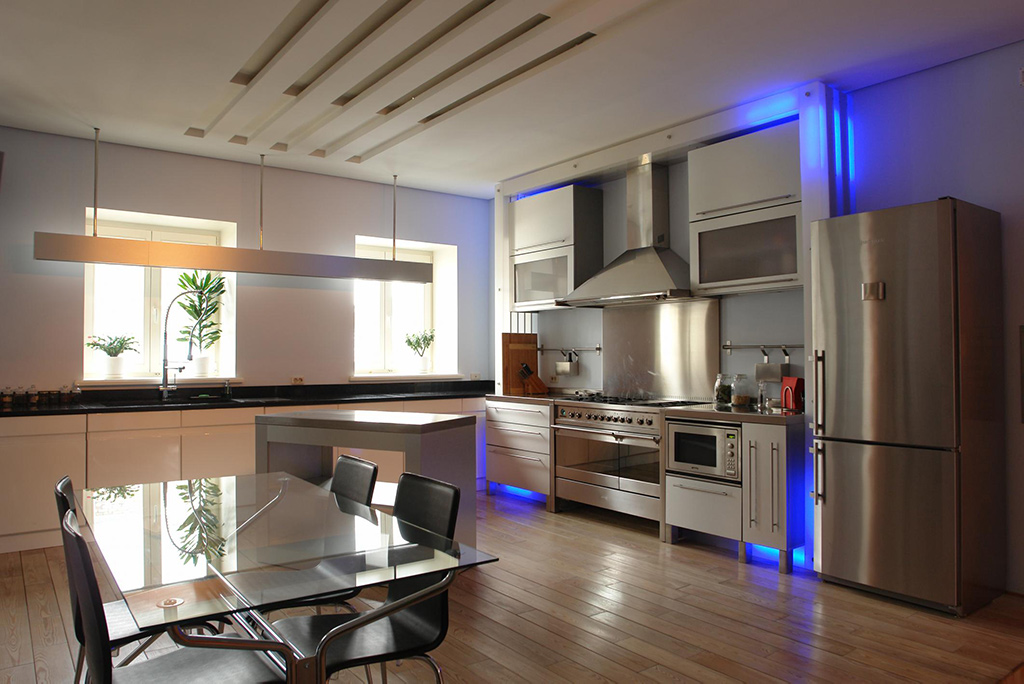
Kitchen self-sanitizes with robots and UV lights
The biosecure home must be sanitized daily (and most rooms immediately after use). Humans are inherently dirty creatures; we produce a trail of shed skin, hair, various oils, and bodily fluids wherever we go.
When a room is used for activities like food prep, eating, bathing, or even sleeping, it becomes soiled, dirty, and contaminated. The biosecure post-pandemic house needs to stay cleaner with less effort from its inhabitants.
1. Install Multiple Robotic Mops and Vacuums in the House
In the past five years, the popularity of robot vacuums has exploded.
Our biosecure homes will have floor-cleaning robot stations built into the bottom of walls and kitchen islands so they can stay out of sight and charge when people are around, and then spring into action when the room is empty.
As soon as the coast is clear, the floor-sweeping robots emerge and begin vacuuming the floor. Next, these hybrid robots spray sanitization cleaners on the floor and clean it up with their mopping pads.
Depending on the square footage of the house, a minimum of two vacuums per floor need to be installed.
2. Clean Kitchen Counter Food Prep Areas With Mini Robots
On the kitchen counter, a smaller version of the floor robot can be installed in the wall behind food prep areas. After meal prep, the robot automatically springs out from behind the backsplash above the stone counter to clean up.
The mini robot vacuums any debris left behind and sanitizes the counter surfaces with UV light affixed to the bottom of the unit. Although the current counter-cleaning bots can only UV sterilize surfaces, newer versions are being developed to sweep as well.
3. Use Mini Scrubbing Robots for Sinks, Baths, and Showers
In all bathrooms, miniature scrubber bots will crawl surfaces to sanitize at least once per day. These small robots can move across any flat surface and, with the use of magnets, climb up metallic surfaces to clean any shower wall.
Remember, homebuilders are not retrofitting these bots into an existing house. This biosecure house has bathrooms built to be friendly for mini cleaning bots. Sinks, showers, and baths all have robot-friendly partial metal surfaces that our magnetic cleaning machines can easily maneuver.
The bathrooms will be sanitized daily without needing to hire cleaners for each week. Current miniature magnetic cleaning bots are limited to outdoor window cleaners, but we assume simple modifications will be made for bathroom cleaning soon.
4. Install Toilets That Are Self-Sanitizing
They say hands are dirtier than toilet seats, but that doesn’t mean you shouldn’t clean your toilet! Toilet seats in the guest baths should have automatic plastic toilet covers like in airports and other public spots.
After each toilet use, the plastic toilet cover rotates to a clean version. Other costlier options include self-cleaning sterilization units; the toilet seat cover automatically closes after use, activating a UV light to sterilize the seat and bowl.
5. Sterilize the Air With a State-of-the-Art HVAC System
Our biosecure houses should have top-of-the-line air processing units that heat and cool the air and sanitize it as well. The air handler unit will come equipped with electrostatic filters, UV sanitizer light, and HEPA filtration.
Combined, these three filtration techniques will kill 100% of biological agents that pass through them.
6. Install a Six-Stage Water Filtration System
We cannot have a biosecure house without securing our water supply. Typical tap water is loaded with dirt, soil, toxic metals, rust, and biocontaminants like fungus, bacteria, and trace amounts of hormones and prescription drugs. The total dissolved solids (TDS) measured in most tap water is between 120 and 500 parts per million. Letting this into the biosecure house would be completely bio-irresponsible!
In the garage or basement, a five-stage whole-house water filtration unit is piped directly into the main water line of the house. The first few stages of the filtration remove rust, sand, clay, silt, and other particles that are larger and easily filtered.
After these first few stages, the water supply should read about 50–100 TDS on a TDS meter. The water is then sent through the reverse osmosis stage. This cleans water by using pressure to force water molecules through a semipermeable membrane. After this stage, our water should have a 5–10 TDS reading, which is very clean.
Anything that is left after the reverse osmosis stage is removed through deionization, which eliminates most of the salts and oxygen from the water and renders it a pure 0 TDS.
The final stage uses UV sterilization to kill any viruses, bacteria, or fungi that somehow survived the rest of the filtration process. At this point, water should contain only oxygen and hydrogen atoms.
The filtration process produces water that is clean and secure for the whole family to bathe in and drink. No bottled water is required if we maintain our filtration system.
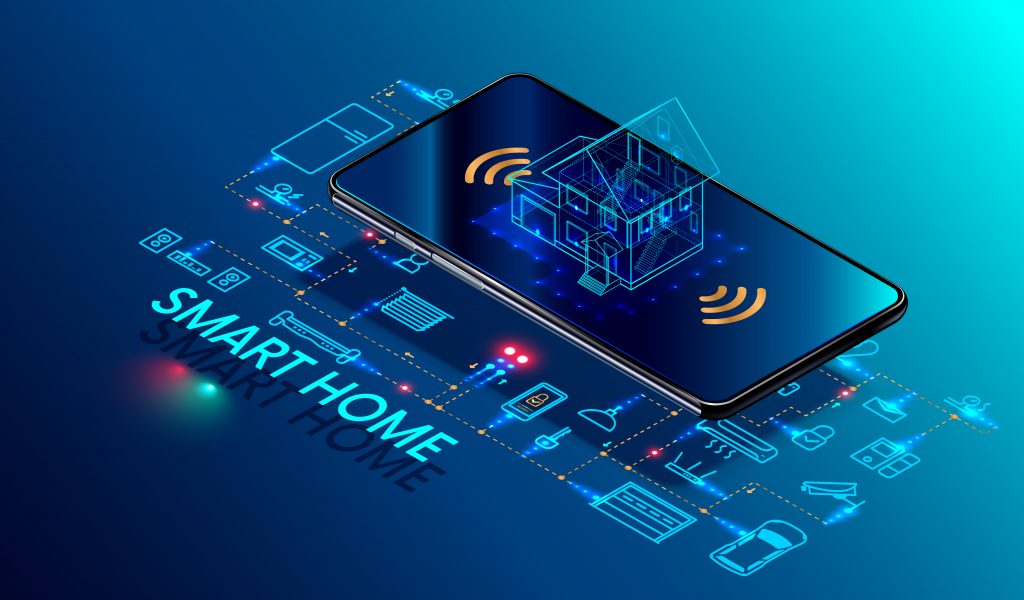
Biosecure homes will be built to be smart houses from the start
Don’t Get Too Excited Yet — There Is Much More to Do
After a house is built using the systems and ideas described in this article, we could easily call it “The Biosecure House of the Future” and sell a whole development of these properties for a premium. But stopping with just biosecurity leaves us with a biosecure house that is not very eco-friendly or self-sustaining.
In the next installment, we will dive into some incredible eco-friendly and self-sustaining solutions to command the premium listing price these houses deserve.
